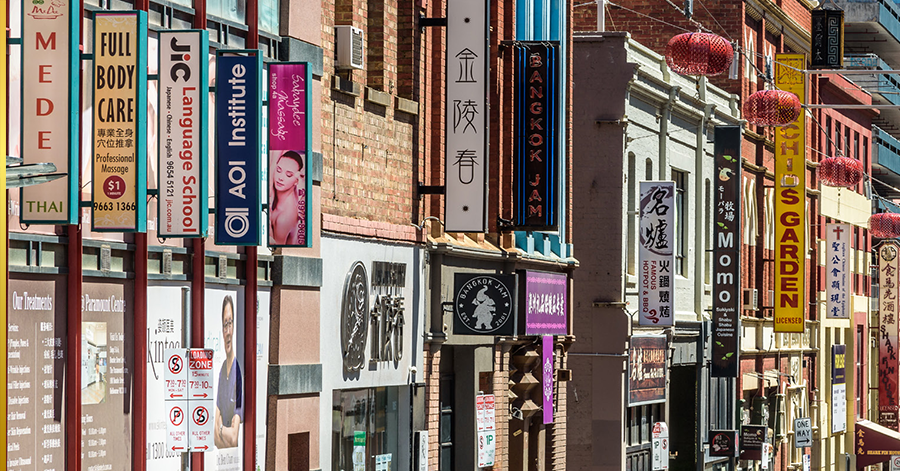
Welcome to the ‘Era of the public’
How social utility unlocks strong, Brand-driven growth
Our nation has reached a tipping point, as the latest Census clearly shows. Gen Y now (albeit marginally) outnumber Baby Boomers as the largest single generation in Australia. Add in Gen Z, and the generation once famously described as preferring avocado on toast to life-long mortgage debt has quickly become a powerful force in the market. Gen Y and Gen Z already account for 36% of total retail spend, and that is expected to reach 48% by the end of the decade.
Kantar’s culture and futures consultants help brands and businesses anticipate new value and action new opportunities in a changed and changing world.
The clear and simple imperative is that brands must foster new relevance to these younger generations if they are
to unlock future growth. Kantar BrandZ data highlights some good news on this front, but also reveals some new
challenges that brands must address.
First, the good news. Kantar BrandZ data for Australia over the last three years shows there are actually many similarities between older and younger Australians. It’s as important to young Aussies as the older generations to have a good range of well-designed products and services that fit well into people’s lives. These attributes remain the most important drivers of a brand’s ‘Demand Power’ – its ability to generate demand or predisposition in the market. There’s very little difference across these metrics between Gen Y and Z, and older generations.
The fundamentals of building strong brands through functional and emotional benefits remain as relevant as ever. But here’s the kicker: For younger Australians in particular, there is a clear and important difference in what they look for in the brands they engage with. Let’s call this a brand’s social utility, or the positive impact the brand has on people and the planet. Kantar BrandZ data shows younger Australians are significantly more engaged with brands they perceive as ‘making people’s lives better’. This is reflected in a slew of metrics where they significantly over-index against their older counterparts – they are drawn to brands they believe treat customers, employees and suppliers well, and those they view as being socially and environmentally responsible. The brands that are seen as disruptive, who are ‘shaking things up’ and delivering to these new expectations, are the same brands that will gain importance into the future.
Kantar BrandZ research in Australia, and evidence from our global network, suggests there is more at play here than the idealism of youth, and these attributes are not just a ‘nice to have’ for brands. Kantar BrandZ data from as early as 2020 showed that brands with strong social utility were already outperforming their competitors, and this applied to multiple categories. These brands had an average of 12% higher appeal, 12% higher relevance, and 21% higher Salience. Our forecasting shows brands with strong social utility will grow their value by 170% in the decade to come – compared to 70% growth for brands without social utility.
The implication for us as marketers is that social utility must not only be addressed through CSR/ESG initiatives or brand purpose statements and campaigns, where it has tended to be siloed out as a campaign initiative. It must be baked in as a core and integral element of both brand building and brand activation.
Our work in this area has highlighted four key hallmarks of brands with strong social utility:
1. Be enlightened: be clear on the positive impact your brand will have on people and the planet, and be open and transparent about how you’re achieving it.
Coles and Woolworths rank as the most socially conscious brands for Gens Y and Z in Australia today, reflecting the importance of taking some, indeed any, action and demonstrating clear intent to positively impact on people and the planet.
2. Be empowering: communicate the impact that your brand will have on people’s lives, beyond the functional and emotional desirability of your products and services.
IKEA is one of the highest-ranking brands delivering to this metric, reflecting its focus on democratising affordable, human-centric design.
3. Be entrepreneurial: be prepared to break category conventions, question received wisdom and demonstrate how you’re shaking things up.
Among Gens Z and Y, Uber Eats is seen as the most disruptive brand in Australia today. Its breaking of conventions around how we choose, order, and eat food fuels this perception.
4. Be experimental: be open to collaboration with Australians, to build value with them, rather than simply creating it internally then taking it to them.
Apple iPhone (measured separately to other Apple portfolio elements) is seen as being one of the most experimental brands in Australia. Its Instagram features only display consumer photos taken on iPhones, with no product or sales content from the brand. It is a platform for people to show their photos, not Apple’s own images.
The world has changed. There is more change to come. More detail on our extensive work mapping this new “Era of the Public” can be found at https://vimeo. com/394198205. For all of us, the implication is clear. Functional and emotional utility remain important.
But understanding, defining and delivery social utility are already key to unlocking strong, brand-driven
growth – and will become even more so.

Dan Robertson-Jones
Partner, Australia
Culture & Futures, Kantar

Jarod Woodcock
Senior Consultant, Australia
Culture & Futures, Kantar
This was first published in the Kantar BrandZ 2023 Most Valuable Brands Report – download it here

